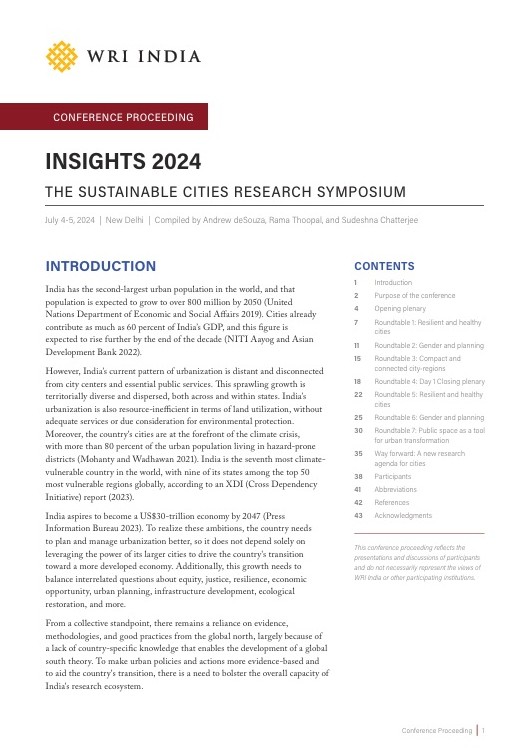Don’t Miss The Bus
by -
This piece originally appeared in The Indian Express
No responsible city government can afford to ignore the benefits of rapid transport. As cities grow, investments are needed to ensure that the majority of citizens can travel safely and rapidly. Bus Rapid Transport (BRT) systems are best placed to solve commuter problems in Indian cities. They take about a tenth of the cost and implementation time of metro systems, and can be easily expanded.
Any new public service must withstand scrutiny, including in its development stages. The Delhi BRT project was deemed to have failed because of the large public clamour for it to be shut down, even before it was properly started. This is a problem easily solved with stronger branding and communication.
The public should broaden its perspective on transport demand. Most people in our cities walk, cycle or use public conveyance. However, we continue to design for car users, who constitute just 10 per cent of road users. We haven’t started a movement to scrap flyovers even though they do not solve congestion and make it much more dangerous for the majority. On the contrary, we all ganged up to oppose the BRT as soon as the city tried to change the status quo.
The BRT systems in other million-plus cities such as Ahmedabad, Surat and Indore learned from the debacle in Delhi. Ahmedabad, for instance, ran a trial operation for three months, organising trips for key opinion-makers in the city. This ensured a solid start by preventing negative publicity and allowing time to iron out glitches.
There were also many technical reasons why Delhi’s BRT project floundered. For instance, it takes one minute for a bus to slow down and stop, for passengers to alight, and for the bus to then accelerate and leave. This dictates a design principle of one bus, one platform, one minute. However, Delhi ran over 180 buses an hour — about twice as many as the system could handle — which created bottlenecks. Problems like these can be scientifically solved by combining information from stations and buses, using technology-led centralised control and other methods to regulate traffic, ensuring segregated right of way and electronic ticketing. Together, these form a package of solutions that could help the Delhi BRT succeed, should policymakers and planners have the foresight to restart the project.
India would do well to start by quadrupling the number of large buses (12-metre-plus long) that it manufactures. China manufactures 1,50,000 annually, and we can barely manage 25,000. Then, the top 100 cities in India will need to find 1,000 to 5,000 hectares of land where buses can park at night and/ or access maintenance services. Not least, maintenance budgets need to keep pace with the rate of acquisition.
City planners and policymakers with the vision to build smart, green cities that provide high-quality services to their citizens are building BRTs the world over. Indeed, the trend is exploding. Since 2000, 150 new systems have been inaugurated. If India does not inaugurate at least three BRT systems a year, we will miss the bus.
Brazil built 600 km of bus rapid transit in the last five years in the run up to the football World Cup and the Olympics. Systems of different sizes continue to dot the map of Latin America with amazing success, from Cali to Montevideo and Panama City. There are successful systems in Guangzhou, Yichan, Hangzhou and Langzhou in China.
The BRT in Delhi need not remain a six-km failed experiment. Brave policymakers can use the opportunity to write a new future for Delhi and for India; a future in which planners and citizens work together to democratise transport, and make our cities more productive and liveable. The Delhi BRT project should be started over, using the lessons from the old project to build high-quality mass transit infrastructure. We should foster an environment that makes every citizen proud of the system.
The writer leads India’s World Resources Institute’s Cities & Transport programme.


